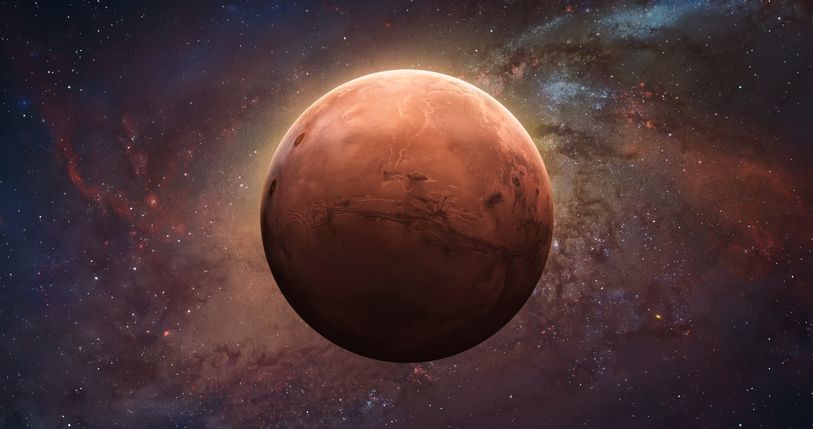A recent study suggests that a vast underground reservoir on Mars might be capable of filling the planet’s surface oceans.
Recent research has uncovered a significant underground reservoir on Mars, which could potentially fill the planet’s surface oceans, according to a study published in Proceedings of the National Academy of Sciences. This groundbreaking discovery, based on data from NASA’s InSight mission, reveals that water, trapped within small fractures and pores in Mars’ crust, has the capacity to cover the planet to a depth of 1 mile (1.6 kilometers). This finding dramatically enhances our understanding of Mars’ hydrological history and its geological evolution.
The InSight mission, which operated from 2018 to 2022, utilized a seismometer to probe the Martian interior, providing critical data about the planet’s subsurface. The study indicates that this vast reservoir of water is located between 7 and 12 miles (11.5 to 20 kilometers) below the Martian surface. This substantial depth and volume of water suggest that Mars has retained a significant amount of its original water, contradicting the long-held belief that the planet’s water resources were entirely lost.
The implications of this discovery are profound. If future missions could access this underground water reservoir, it could offer new insights into Mars’ climatic past and its potential to support life. The presence of such a large amount of water beneath the surface may provide clues about the planet’s ancient environment and its ability to sustain life, offering exciting opportunities for future exploration and research.

Mars has intrigued scientists for decades due to evidence of its wetter past. Previous missions have identified ancient lakes, river channels, and deltas, indicating that Mars once had a much more hospitable climate. However, the planet’s atmosphere thinned out more than 3 billion years ago, leading to a drastic reduction in surface water. Although some water remains frozen at the polar ice caps, this does not fully account for the planet’s “missing” water. The new findings suggest that a significant portion of this water might have seeped into the Martian crust and is now stored in this deep underground reservoir.
Understanding this hidden reservoir could also help in assessing the potential for future human exploration and habitation on Mars. Access to this water would be crucial for long-term missions and colonization efforts, providing a necessary resource for astronauts and potentially supporting agricultural activities.
Overall, the discovery of this massive underground reservoir represents a significant advancement in our understanding of Mars. It not only sheds light on the planet’s hydrological history but also opens up new avenues for exploration and scientific inquiry, highlighting Mars’ potential as a more dynamic and water-rich world than previously thought.


















